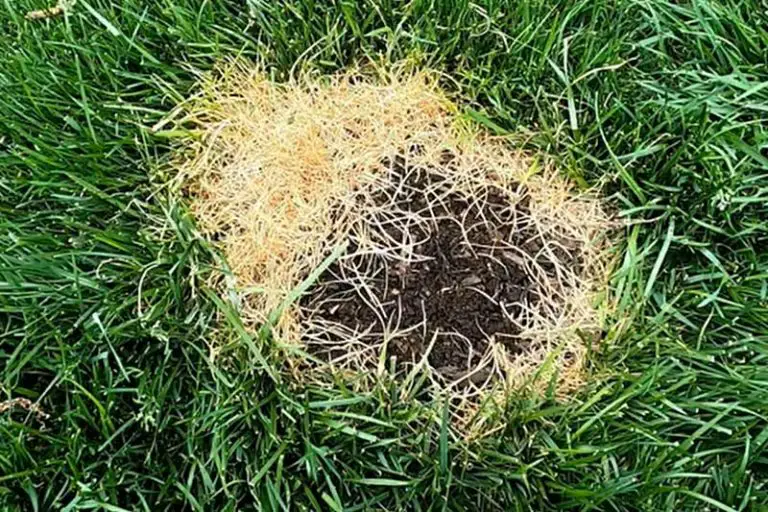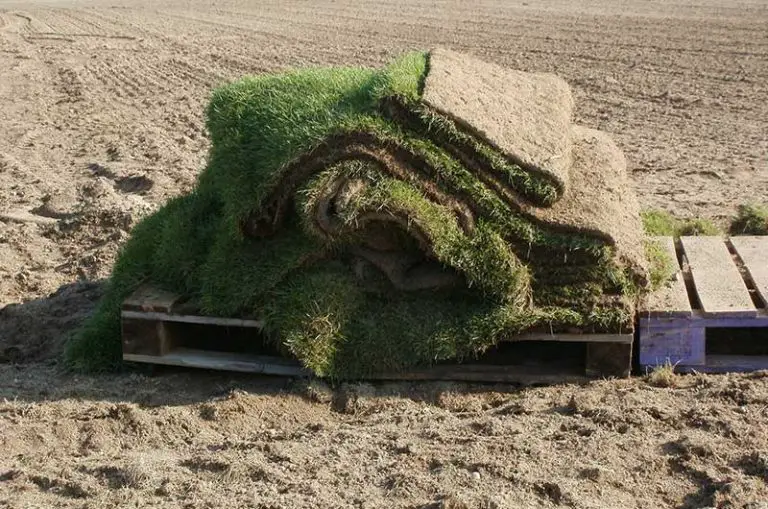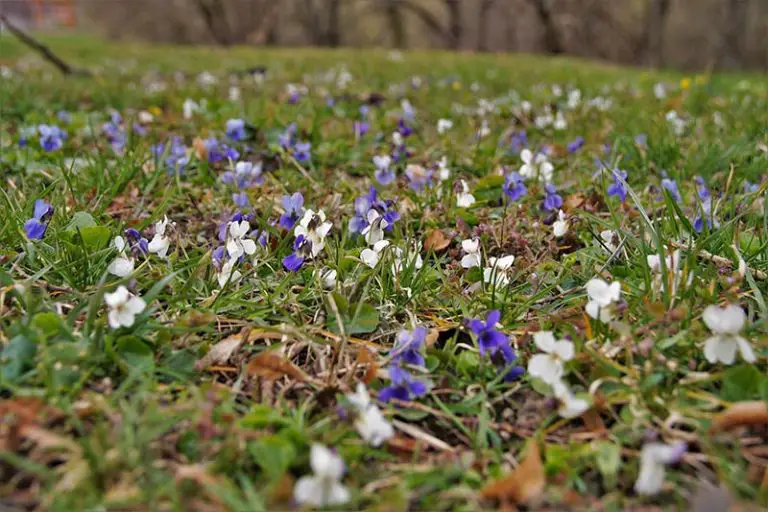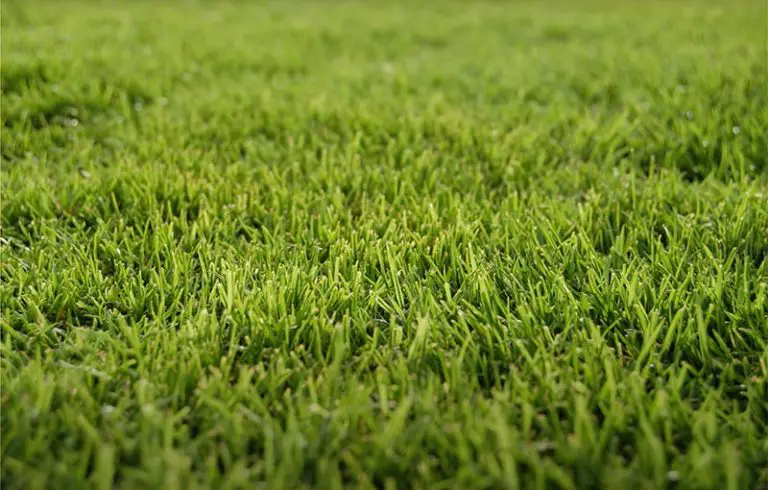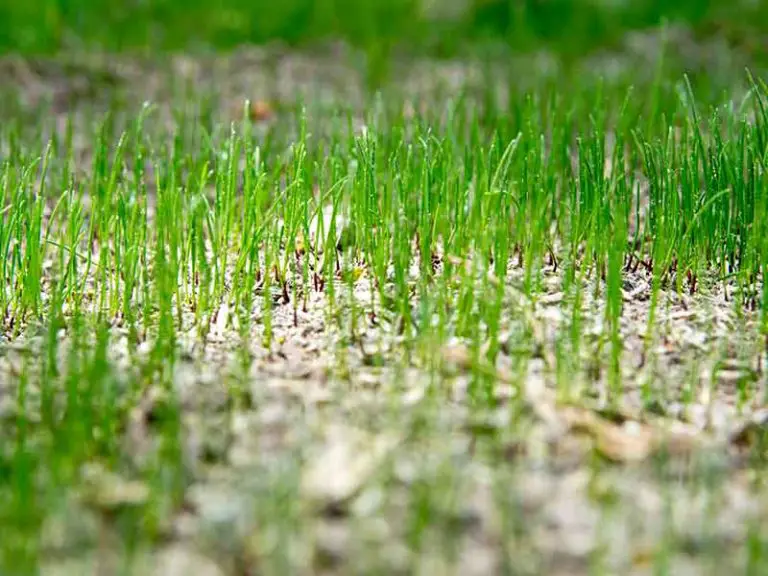What to Do After Aerating a Lawn
After aerating, your soil is in the ideal condition to receive a range of other lawn care activities. Depending on the state of your lawn, there are a few different things you can do straight after aerating to make the most out of your freshly-aerated soil.
After aerating a lawn, you should leave the plugs and holes to break down naturally. You can then overseed, water, fertilize, or treat your lawn with a pre-emergent weed killer. In the weeks after aerating your lawn, you should keep off the grass and hold off on mowing for the first time until the grass reaches between 3 and 4 inches tall.
This article details what you should expect from your aerated lawn over the weeks following aeration. We have also provided full guidance on the steps you can take after aerating your lawn to see the best results from your efforts.
What is Lawn Aeration?
Lawn aeration involves using specialized aeration equipment to create small holes throughout your lawn’s turf. By aerating your lawn, you loosen up the soil and reduce areas of compacted, hard dirt. This in turn allows water, air, and nutrients to permeate more deeply into the turf layer, reaching the grass at its roots. The result is a lawn full of healthier, greener grass that’s more resistant to stress from disease, climate, and pests.
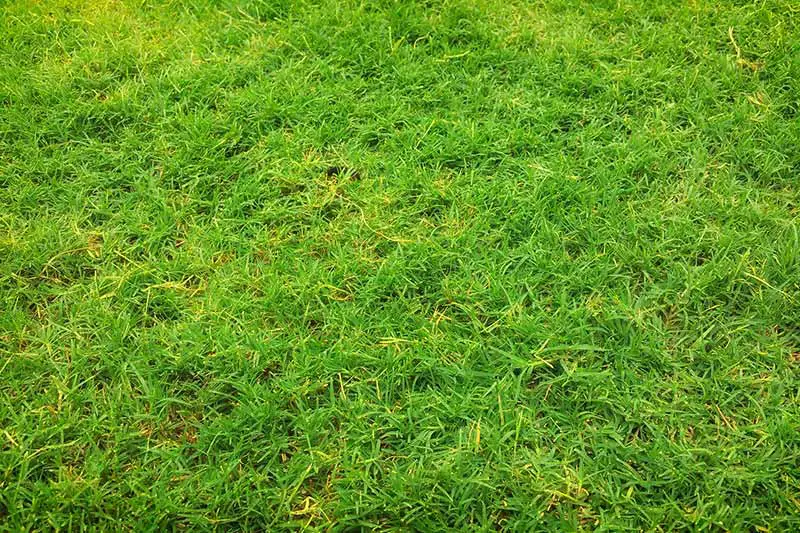
When to Aerate Your Lawn
The best time to aerate your lawn is during your grass species’ period of most active growth. This will depend on the type of grass you have, i.e. whether it’s cool-season or warm-season. You should aerate your lawn during this period to ensure it makes the fastest recovery from the aeration process.
Warm-season grasses: Aerate warm-season lawns in the late spring to early summer. This ensures that the holes left after the aeration process will fill in quickly.
Cool-season grasses: Aerate cool-season lawns in the early fall. The low temperatures and reduced competition from weeds at this time allow the grass to make a quick recovery. It’s important to time the aeration so that there are at least four weeks of growing time before the first frost.
As a general rule, never aerate your lawn during a dormant period for your grass type. If your grass is dormant, it will fail to fill in the holes left behind from the aeration process. This will leave you with a patchy lawn full of bare spots. Plan your aeration so that there are at least three to four weeks of favorable growing conditions after the process. As an additional note, it’s also best practice to aerate after rain if possible, when the ground is soft and slightly damp.
What to Expect After Aerating Your Lawn
Lawn aeration provides instant and lasting benefits for the condition of your soil. What you should expect after aerating your lawn is generally as follows:
- Day 1: Your soil will be in a much better condition immediately after aerating your lawn. You will have broken up the thatch layer and greatly reduced the amount of soil compaction.
- After 2 Weeks: Around two weeks after aerating, the majority of the soil plugs that you removed during the process will finish breaking down.
- After 2 to 4 Weeks: After two to four weeks, any new grass seed or grass that has spread will begin to germinate. The exact time that this happens will depend on your grass type and the external conditions during this period.
- After 7 to 10 Weeks: The new grass plants should have deep, established root systems by about seven to ten weeks after aerating your lawn. If you aerated correctly and followed the right aftercare, your lawn should now be growing thicker, stronger grass.
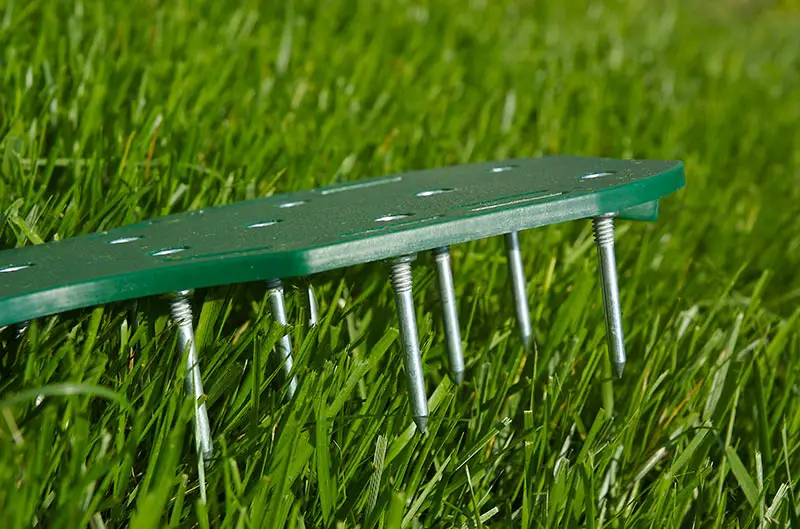
What to Do After Aerating a Lawn
Follow each of these tips on what to do after aerating your lawn depending on what stage of growth your grass is at.
Leave Soil Plugs on Lawn
Tip for: All lawns.
This tip is valuable if you have used a core aerator to aerate your lawn. As we’ve explained, the core aeration process involves removing plugs of turf to create holes in the soil. After aerating with a core aerator, the soil plugs are left scattered across the lawn. Although you may be tempted to clear up the plugs, it’s best practice to leave them where they are.
If left on the soil, the soil plugs will dry up and break down over time. The speed at which this happens will be affected by rainfall, irrigation, mowing, and lawn usage. Generally speaking, it should only take about two weeks for the majority of the plugs to break down. The result is that you get a free top-dressing of nutrient-rich soil that would have otherwise gone to waste had you removed the cores after aerating.
Let Holes Rest
Tip for: All lawns.
Regardless of your method of aeration, you will be left with a lawn full of holes. It’s important to let these holes rest and to avoid interfering with them in the weeks after aerating. They will fill in naturally with soil and grass roots as your new grass begins to germinate.
Overseed Lawn
Tip for: Lawns that have thin or sparse grass, or patches of dead grass.
It’s an ideal time to overseed your lawn immediately after aerating it to fix up any yellowing or dead patches of grass. The effectiveness of overseeding is greatly increased by aeration, as the holes left behind from the process improve soil-to-seed contact. This enables the seeds to be sown deeper into the ground and into any soil plugs left on the lawn.
The aerated soil is also in the ideal condition for the new grass seed to grow; the seedlings have plenty of access to the air, water, and nutrients it needs from the spaces created in the aeration process. On top of this, an aerated lawn provides better shelter for the seeds. They are better protected from being washed or blown away, or eaten by birds and other hungry wildlife.
Straight after aerating the lawn, overseed it using a broadcast spreader. The best type of grass seed for overseeding your lawn will depend on a couple of factors; you need to choose a seed that’s compatible with the current species on your lawn, as well as the area that you live in. After overseeding, continue to water and care for your lawn and new grass seed properly for best results.
Water Lawn
Tip for: All lawns, particularly those with yellowing or browning grass.
Aerating your lawn puts it in a much better condition to absorb and retain water, resulting in healthier grass plants. Over time, the soil in your lawn will become compacted from weather conditions and foot traffic. Soil in this condition is unable to absorb water, causing it to run off and away from your grass’ roots. Without proper access to water, your healthy grass will turn yellow or brown before eventually dying off. By aerating, you create spaces in the soil for water to permeate deeper where it can nourish your grass plants.
When watering newly seeded lawns, it’s crucial to keep the seed consistently moist throughout the germination process. You will need to water your lawn at least once per day for the first three weeks after overseeding. Take extra care not to overwater at this stage, as this could suffocate the new grass. You should add as much water as it takes to make the soil moist, without making it soggy or waterlogged. Once the grass is fully established, you can reduce your watering sessions to twice per week.
When watering mature lawns, water your lawn thoroughly straight after aerating. Continue to water the lawn twice per week, watering for about 30 to 60 minutes each time. This will encourage your grass to grow deep, strong roots.
Treat Lawn With Pre-Emergent Weed Killer
Tip for: Mature lawns that have a recurring annual weed problem.
If you aren’t planning on overseeding, you can apply a pre-emergent weed killer straight after aerating your lawn. Pre-emergent weed killer is a great way to combat a lawn full of weeds early on in the growing season. When applied at the right time (i.e. in early spring), this type of weed killer prevents weed seed from germinating. The holes left behind from the aeration process improve the weed killer’s effectiveness by allowing it to reach deeper into the soil.
Take note that, in addition to weed seeds, pre-emergent weed killer will prevent all other types of seed from germinating. This includes any new grass seed, therefore you should avoid this tip if you have overseeded or plan on overseeding. You should hold off on overseeding for at least four months after using a pre-emergent weed killer.
For best results from your chosen weed killer, check the label for application instructions. Some weed killers work best when applied to a damp lawn, while others need to be watered in straight after application. Wear protective gear during application, and keep kids and pets off the lawn for as long as the product recommends.
Fertilize Lawn
Tip for: Newly seeded lawns or lawns with poor grass growth.
An aerated lawn is in the perfect condition to receive fertilizer. Fertilizers, both organic and synthetic, contain the nutrients needed by grass to grow. These nutrients primarily include nitrogen (N), phosphorus (P), and potassium (K), present in varying amounts depending on the fertilizer’s formulation. There are also two different types of fertilizers; either dry, granular fertilizer, or liquid fertilizer.
Both dry and liquid fertilizers will perform better if you apply them to a recently aerated lawn. The loosened soil and the holes left after the aeration process allow the fertilizer to permeate deeper into the ground. This enables the fertilizer to reach the grass plants’ roots where it will most effectively fertilize the plants. Fertilizing an aerated lawn also helps to prevent fertilizer run-off from compacted soil or heavy rain.
When fertilizing a mature lawn, you should first test your soil to determine its pH and nutrient levels. Use the results of this test to choose the best type of fertilizer for your lawn’s specific needs. Ideally, you should opt for a slow-release organic fertilizer to provide your lawn with long-term fertilization. While chemical fertilizers work faster, they can be harsher on your lawn and are more likely to cause fertilizer burn.
When fertilizing an overseeded lawn, you should instead use a starter fertilizer. Starter fertilizer contains the ideal balance of nutrients to encourage the germination and root growth of new grass seeds. You can fertilize your lawn either before or after overseeding. Make sure to avoid using any fertilizer described as ‘weed and feed’ if you have just overseeded; this type of fertilizer contains a herbicide that will kill your new grass seed.
Keep Off the Grass
Tip for: All lawns.
After any necessary seeding, watering, or fertilizing activities, keep off the lawn for at least a month after aerating it. This includes foot traffic from people, pets, or vehicles. Doing so will give the lawn a chance to grow established grass plants with robust root systems that can tolerate the stress of foot traffic.
You’ll be able to use your lawn as normal after about two to four weeks. This is also the point at which you can mow for the first time, as explained in the following section.
Mow Lawn
Tip for: All lawns.
As we’ve just mentioned, you should wait about two to four weeks after aerating your lawn before mowing your new grass for the first time. Again, this is to allow your grass plants to germinate and establish strong root systems in the soil.
Hold off on mowing the lawn until the grass is somewhere between three and four inches tall. Cut the grass to the best height for your species and continue with a regular mowing schedule throughout the season.

